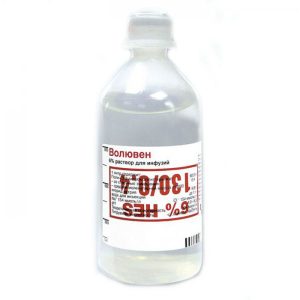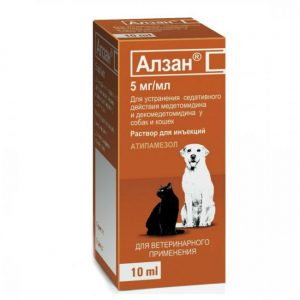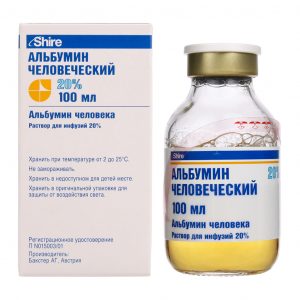Description
Pharmacological action of
The mechanism of action of acetylsalicylic acid (ASA) is based on the irreversible inhibition of cyclooxygenase (COX-1), as a result of which thromboxane A2 synthesis is blocked and platelet aggregation is suppressed. It is believed that ASA has other mechanisms for suppressing platelet aggregation, which expands its scope in various vascular diseases. ASA also has anti-inflammatory, analgesic, antipyretic effect. The anti-inflammatory effect is associated with a decrease in blood flow due to inhibition of prostaglandin E2 synthesis.
Magnesium hydroxide, which is part of the Phasostabil preparation, has an antacid effect and protects the mucous membrane of the gastrointestinal tract from the effects of ASA.
Pharmacokinetics
Absorption
After oral administration, ASA is rapidly and almost completely absorbed from the gastrointestinal tract. Simultaneous eating slows down absorption. Partially metabolized during absorption.
Distribution and metabolism of
During and after absorption, ASA turns into the main metabolite – salicylic acid, which is metabolized under the influence of enzymes, mainly in the liver to form metabolites (phenyl salicylate, glucuronide salicylate and salicyluric acid), found in many tissues and body fluids . In women, the metabolic process is slower (lesser activity of enzymes in the blood serum).
The maximum concentration of ASA in blood plasma is reached 10-20 minutes after ingestion, salicylic acid – after 0.3-2 hours. ASA and salicylic acid are highly bound to plasma proteins and are rapidly distributed in the body. The degree of binding of salicylic acid to plasma proteins depends on the concentration, not linear. At low concentrations (less than 100 Ñg / ml), up to 90% of salicylic acid binds to plasma proteins, at high concentrations (more than 400 Ñg / ml) – up to 75%.
Bioavailability of ASA is 50-68%, salicylic acid – 80-100%. Salicylic acid crosses the placental barrier, is found in breast milk.
In renal failure, during pregnancy and in newborns, salicylates can displace bilirubin from the association with albumin and contribute to the development of bilirubin encephalopathy.
Excretion of
ASA and its metabolites are excreted mainly by the kidneys.
The half-life of ASA is 15-20 minutes, salicylic acid – 2-3 hours when taking ASA in low doses and significantly increases when taking ASA in high doses as a result of saturation of enzyme systems. Unlike other salicylates, with repeated administration of the drug, non-hydrolyzed ASA does not accumulate in blood serum. In patients with normal renal function, 80-100% of a single dose of ASA is excreted by the kidneys within 24-72 hours.
Magnesium hydroxide at the used doses does not affect the bioavailability of ASA.
Indications
Primary prophylaxis of cardiovascular diseases such as thrombosis and acute heart failure in the presence of risk factors (for example, diabetes, hyperlipidemia, hypertension, obesity, smoking, old age).
Prevention of recurrent myocardial infarction and blood vessel thrombosis.
Prevention of thromboembolism after vascular surgery (coronary artery bypass grafting, percutaneous transluminal coronary angioplasty).
Unstable angina pectoris.
Contraindications
Hypersensitivity to ASA, excipients of the drug and other non-steroidal anti-inflammatory drugs (NSAIDs)
Cerebral hemorrhage
Propensity to bleed (vitamin K deficiency, thrombocytopenia, hemorrhagic diathesis)
Chronic heart failure functional class III-IV according to NYHA bronchial asthma NSAIDs
Complete or incomplete combination of bronchial asthma, recurrent nasal polyposis and paranasal sinuses, and intolerance to ASA or other NSAIDs, incl tea inhibitors of cyclooxygenase-2 (COX-2) (including a history)
Erosive-ulcerative lesion of the gastrointestinal tract (in the acute phase)
Gastrointestinal bleeding
Severe renal failure (creatinine clearance less than 30 ml / K) min )
Hepatic insufficiency (Child-Pugh class B and C)
Pregnancy (I and III trimesters), breast-feeding period
Deficiency of glucose-6-phosphate dehydrogenase
Concomitant use with methotrexate (more than 15 mg per week) srdlk 18 years.
With caution
For gout, hyperuricemia, a history of ulcerative lesions of the gastrointestinal tract or gastrointestinal bleeding, renal failure of mild to moderate severity (CC more than 30 ml / min), liver failure (Child A class classification ), bronchial asthma, hay fever, nasal polyposis, allergic conditions, in the second trimester of pregnancy, with diabetes mellitus, old age with simultaneous use with the following drugs: methotrexate (less than 15 mg per week) anticoagulants, thrombolytic and antiplatelet agents, NSAIDs and salicylates in high doses, narcotic analgesics, sulfonamides (including co-trimoxazole), carbonic anhydrase inhibitors (acetazolamide), digoxin, lithium, hypoglycemic agents for oral administration (derivatives of sulfonamines, sulfonamines, sulfonamines, sulfonamines) acid, selective serotonin reuptake inhibitors, ibuprofen, systemic glucocorticosteroids, ethanol (alcohol-containing drugs, drinks).
Special instructions
The drug should be used as directed by a doctor.
ASA can provoke bronchospasm, as well as cause attacks of bronchial asthma and other hypersensitivity reactions. Risk factors are a history of bronchial asthma, hay fever, nasal polyposis, chronic diseases of the respiratory system, as well as allergic reactions to other drugs (for example, skin reactions, itching, urticaria).
ASA can cause bleeding of varying severity during and after surgery.
A few days before the planned surgical intervention, the risk of bleeding should be assessed compared with the risk of developing ischemic complications in patients taking low doses of ASA. If the risk of bleeding is significant, taking ASA should be temporarily stopped.
The simultaneous use of ASA with anticoagulants, thrombolytics and antiplatelet drugs is associated with an increased risk of bleeding.
In case of impaired renal function (CC more than 30 ml / min), as well as circulatory disorders resulting from atherosclerosis of the renal arteries, chronic heart failure, extensive surgery, sepsis, cases of massive bleeding, caution should be exercised, since in all of the above cases, ASA may increase the risk of developing acute renal failure / impaired renal function (see the “Caution” section).
The risk of developing acute renal failure is known to increase with the combined use of other NSAIDs with ACE inhibitors or diuretics.
In patients with mild to moderate hepatic insufficiency, liver function should be regularly monitored (see section Caution .)
ASA in low doses can provoke the development of gout in susceptible patients (having decreased uric acid excretion).
The combination of ASA with methotrexate is accompanied by an increased incidence of side effects from the hematopoiesis, combined use with valproic acid increases the risk of toxicity. During the first weeks of simultaneous use of the drug Fazostabil and methotrexate at a dose of less than 15 mg per week, a blood test should be performed weekly. Careful monitoring must be carried out in the presence of even small impaired renal function, as well as in elderly patients (see sections “Contraindications”, “With caution”, “Interaction with other drugs”).
The simultaneous use of ASA with anticoagulants, thrombolytic and antiplatelet drugs is associated with an increased risk of bleeding and damaging effects on the mucous membrane of the gastrointestinal tract (see sections “With caution”, “Interaction with other drugs”). The simultaneous use of the drug Fazostabil with ibuprofen is not recommended in patients with an increased risk of developing cardiovascular diseases, since a decrease in the antiplatelet effect of ASA in doses up to 300 mg leads to a decrease in cardioprotective effects. Patients taking ibuprofen for pain relief should inform the doctor about this (see sections “With caution”, “Interaction with other drugs”).
Recommended monitoring of plasma concentrations of digoxin and lithium at the beginning or at the end of the simultaneous use of the drug Fazostabil may require dose adjustment (see sections “With caution”, “Interaction with other drugs”).
When used in conjunction with diuretics and antihypertensive drugs (for example, ACE inhibitors), a possible decrease in their effectiveness should be considered (see section “Interaction with other drugs”).
High doses of ASA have a hypoglycemic effect, what you need to keep in mind when prescribing it to patients with diabetes mellitus receiving hypoglycemic agents for oral administration and insulin.
With the simultaneous use of systemic glucocorticosteroids and salicylates, it should be remembered that during treatment, the concentration of salicylates in the blood is reduced, and after the cancellation of systemic glucocorticosteroids, an overdose of salicylates is possible. With prolonged use of low doses of ASA as an antiplatelet therapy, caution should be exercised in elderly patients due to the risk of gastrointestinal bleeding.
With prolonged use of the drug Fazostabil, a general blood test and analysis of feces for occult blood, as well as the functional state of the liver, should be periodically monitored.
While taking ASA with alcohol, the risk of damage to the mucous membrane of the gastrointestinal tract and prolonged bleeding time is increased.
In severe forms of glucose-6 phosphate dehydrogenase deficiency, ASA can cause hemolysis and hemolytic anemia (see section “Contraindications”). Factors that increase the risk of hemolysis and hemolytic anemia are fever, acute infections, and high doses of ASA.
Influence on the ability to drive vehicles and work with mechanisms
During treatment with the drug Fazostabil, care must be taken when driving vehicles and engaging in potentially dangerous activities that require increased concentration and speed of psychomotor reactions.
Ingredients
Active ingredients: acetylsalicylic acid 300 mg – 30 mg – 30 mg.
Excipients (core): microcrystalline cellulose – 167.81 mg, croscarmellose sodium – 16.00 mg, povidone-K25 – 12.00 mg, magnesium stearate – 3.80 mg.
Excipients (shell): hypromellose – 4.80 mg, macrogol-4000 – 1, 20 mg, titanium dioxide – 2.00 mg.
Dosage and administration
Inside, film-coated tablets of the drug Phasostabil are swallowed whole with water.
The drug Phasostabil is intended for long-term treatment.
The duration of treatment is determined by the doctor.
– Primary prophylaxis of cardiovascular diseases such as thrombosis and acute heart failure in the presence of risk factors (for example, diabetes mellitus, hyperlipidemia, hypertension, obesity, smoking, old age)
1 tablet of the drug Phazostabil containing ASA in a dose of 150 mg on the first day, then 1 tablet containing ASA in a dose of 75 mg 1 time per day.
– Prevention of recurrent myocardial infarction and blood vessel thrombosis
1 tablet of the drug Fazostabil containing ASA in a dose of 75-150 mg 1 time per day.
– Prevention of thromboembolism after vascular surgery (coronary artery bypass grafting, percutaneous transluminal coronary angioplasty)
1 tablet of the drug Fazostabil containing ASA in a dose of 75-150 mg 1 time per day.
– Unstable angina
1 tablet of the drug Fazostabil containing ASA in a dose of 75-150 mg 1 time per day.
If you skip the next dose of Fazostabil, you must take the missed dose of the drug as soon as the patient remembers this. To avoid doubling the dose, you should not take the missed tablet if the time for taking the next dose is approaching.
Peculiarities of action during the first administration or withdrawal of the drug were not observed.
Side effects
The frequency of adverse reactions given below, according to the classification of the World Health Organization, was determined according to the following: very often ( 1/10) often (> 1/100, <1/10) infrequently (> 1/1000 , <1/100) rarely (> 1/10000, < 1/1000) is very rare (<1/10000), including single messages. On the part of the immune system: infrequently – urticaria, angioedema (Quincke’s edema), skin rash, pruritus, rhinitis, swelling of the nasal mucosa very rarely – anaphylactic shock, cardio-respiratory distress syndrome. From the gastrointestinal tract: very often – heartburn often – nausea, vomiting infrequently – pain in the abdomen, ulcers of the mucous membrane of the stomach and duodenum, including perforating (rarely), gastrointestinal bleeding very rarely – stomatitis, esophagitis, erosive lesions of the upper gastrointestinal tract (including strictures), colitis, irritable bowel syndrome. From the respiratory system, chest and mediastinal organs: often – bronchospasm. From the blood and lymphatic system: very often – increased bleeding rarely – anemia very rarely – aplastic anemia, hypoprothrombinemia, thrombocytopenia, neutropenia, leukopenia, eosinophilia, agranulocytosis. Cases of hemolysis and hemolytic anemia have been reported in patients with severe glucose-6-phosphate dehydrogenase deficiency. From the nervous system: often – headache, insomnia infrequently – dizziness, drowsiness rarely – tinnitus, intracerebral hemorrhage. From the kidneys and urinary tract: very rarely – impaired renal function. Influence on the results of laboratory and instrumental studies: rarely – increased activity of “liver” enzymes. Overdose Salicylism syndrome develops when taking acetylsalicylic acid in a dose of more than 100 mg / kg / day for more than 2 days due to the use of toxic doses of the drug as part of improper therapeutic use (chronic poisoning) or a single accidental or intentional administration of a toxic dose of the drug adult or child (acute poisoning). Overdose is especially dangerous in elderly patients. Overdose symptoms in mild to moderate severity (single dose less than 150 mg / kg): Dizziness, tinnitus, hearing loss, increased sweating, nausea and vomiting, headache, confusion, tachypnea, hyperventilation, respiratory alkalosis. Treatment: gastric lavage, repeated intake of activated carbon, forced alkaline diuresis, restoration of water-electrolyte balance and acid-base state. Overdose symptoms in moderate to severe severity (single dose 150 mg / kg – 300 mg / kg – moderate severity, more than 300 mg / kg – severe poisoning): Respiratory alkalosis with compensatory metabolic acidosis, hyperpyrexia, hyperventilation, non-cardiogenic edema lungs, respiratory depression, asphyxia from the cardiovascular system: cardiac arrhythmias, marked decrease in blood pressure, inhibition of cardiac activity from the water-electrolyte balance: dehydration, impaired renal function from oliguria a lot before the development of renal failure, characterized by hypokalemia, hypernatremia, hyponatremia impaired glucose metabolism: hyperglycemia, hypoglycemia (especially in children), ketoacidosis, tinnitus, deafness gastrointestinal bleeding hematological disorders: from inhibition of platelet aggregation to coagulopathy, prolonged prothrombin time, hypoprothrombinemia neurological disorders: toxic encephalopathy and depression of central nervous system function, drowsiness, drowsiness cramps). Treatment: immediate hospitalization in specialized departments for emergency therapy – gastric lavage, repeated use of activated carbon, restoration of water-electrolyte balance and acid-base state, forced alkaline diuresis, symptomatic therapy. Storage conditions In the dark place at a temperature of no higher than 25 ° C. Keep out of the reach of children. Expiration 2 years. Do not use after expiration date. Terms and conditions without prescription dosage form tablets




